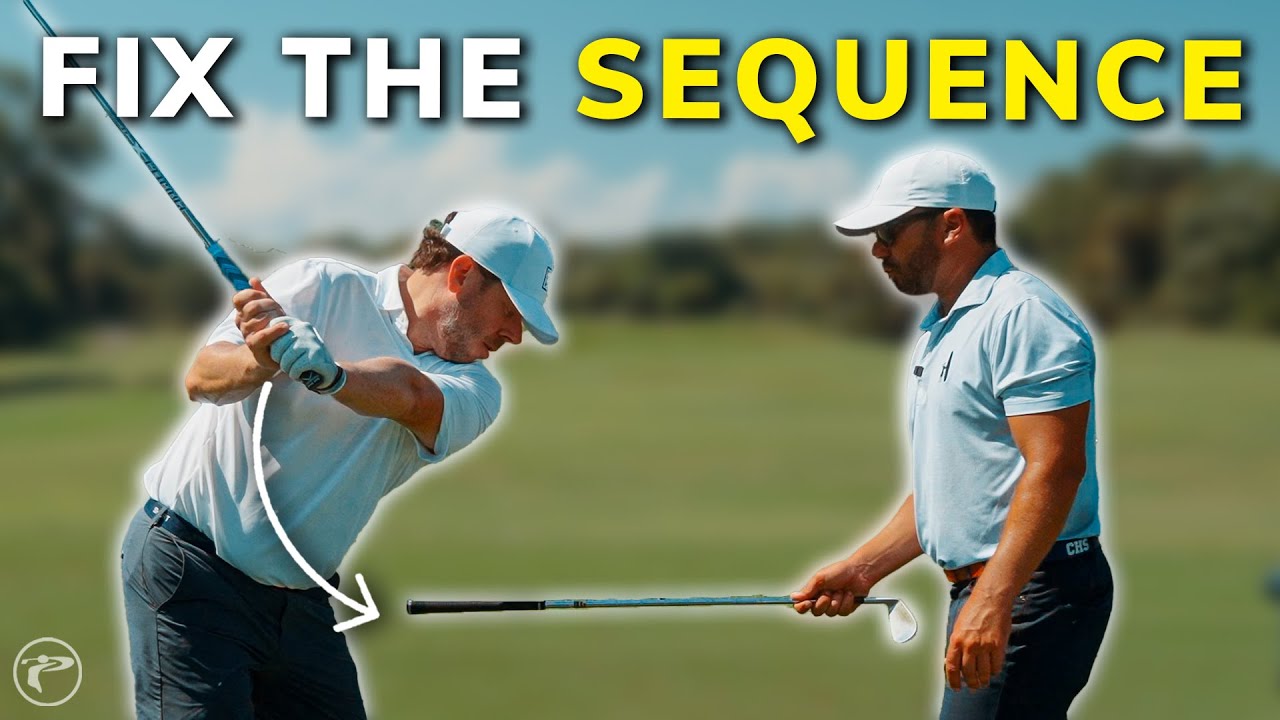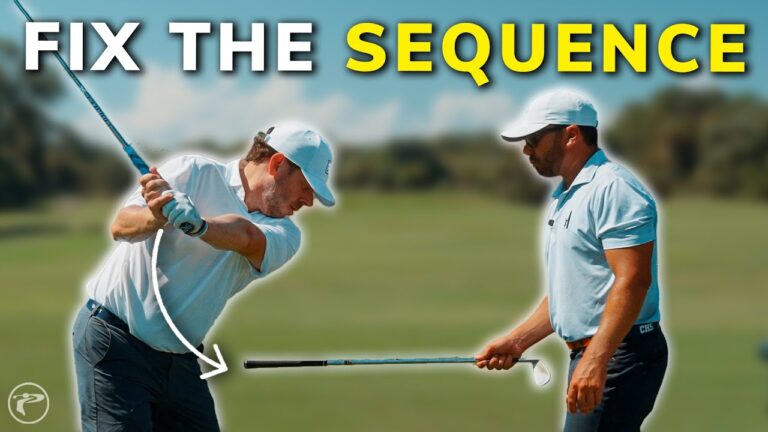 Transform Your Golf Game: Discover how mastering your swing sequence can enhance your ball contact and power. Let’s dive into seven actionable steps to refine your golf swing.
Transform Your Golf Game: Discover how mastering your swing sequence can enhance your ball contact and power. Let’s dive into seven actionable steps to refine your golf swing.
Table of Contents
- Understand Why Proper Swing Sequence Is Critical
- Stop and Pause at the Top
- Feel the Arms Lead
- Bump Your Hips and Square Your Shoulders
- Rehearse the Sequence with Drills
- Sync Your Body and Hands
- Be Patient and Relentless
- Frequently Asked Questions (FAQ)
- Conclusion
Understand Why Proper Swing Sequence Is Critical
Proper swing sequencing in golf is crucial. It’s the orderly transition during your swing that can dictate success on the course. Your lower body should lead the downswing, followed by the torso, arms, and finally, the club. When out of order, issues like early release and flipping arise, resulting in inconsistent contact.
Stop and Pause at the Top
Harness the power of a pause at the top of your swing to reset your movement sequence. This brief stop prevents premature motions and helps you engage your arms and hands first as you start the downswing. Practice pausing to build a natural rhythm and consistent swing flow.
Feel the Arms Lead
Lead your downswing with your arms and hands. This technique provides proper sequencing and prevents your shoulders from spinning out too early. Practice this by pausing at the top, then beginning your downswing with arm movement to create a natural, fluid motion.
Bump Your Hips and Square Your Shoulders
Coordinate your hips and shoulders for optimal sequencing. Bump your lead hip slightly toward the target to engage lower body rotation while maintaining a square shoulder line. This alignment ensures your clubhead travels on an efficient path.
Rehearse the Sequence with Drills
Drills are pivotal in reinforcing your swing sequence. Regularly practice drills like the Pause and Transition or Wall Drill to engrain correct movement patterns. Consistent practice translates to better on-course performance.
Sync Your Body and Hands
A synchronized body and hand movement leads to optimal contact. Ensure your chest is aligned with the ball at impact while hips opened. This creates aligned impact geometry for powerful and precise strikes.
Be Patient and Relentless
Refining your swing sequence requires diligence. Stay committed to practicing purposeful drills and resist the urge to rush the learning process. Repetition is your ally towards better ball flight and game consistency.
Frequently Asked Questions (FAQ)
Q: Why does pausing at the top of the swing help my sequence?
A: It allows resetting of your rhythm, fostering the correct initiation of the downswing with your arms and hands.
Q: What does it mean to have the arms “lead” the downswing?
A: Starting the downswing with your arms prevents early release and enhances shot stability.
Q: How do I know if my shoulders are too open at the top?
A: Shoulders pointing too far left (for right-handed golfers) indicate they are too open. Practice squaring them for better alignment.
Q: What is the “hip bump” and why is it important?
A: It initiates lower body movement, clears the hips, and aligns your swing path accurately.
Q: How long does it take to rewire my swing sequence?
A: Regular, intentional practice can lead to improvements within weeks.
Q: Can I practice these drills at the driving range?
A: Absolutely, they are designed for range practice, ensuring efficient sequence integration.
Conclusion
Revolutionizing your golf swing with proper sequencing lays the foundation for improved ball contact and control. By focusing on these fundamental steps and practicing diligently, you pave the way for a more consistent and powerful swing. Commit to these techniques and transform your game, beginning with the pauses and hand-leading techniques discussed. Your journey to a better golf game starts now.


0 Comments